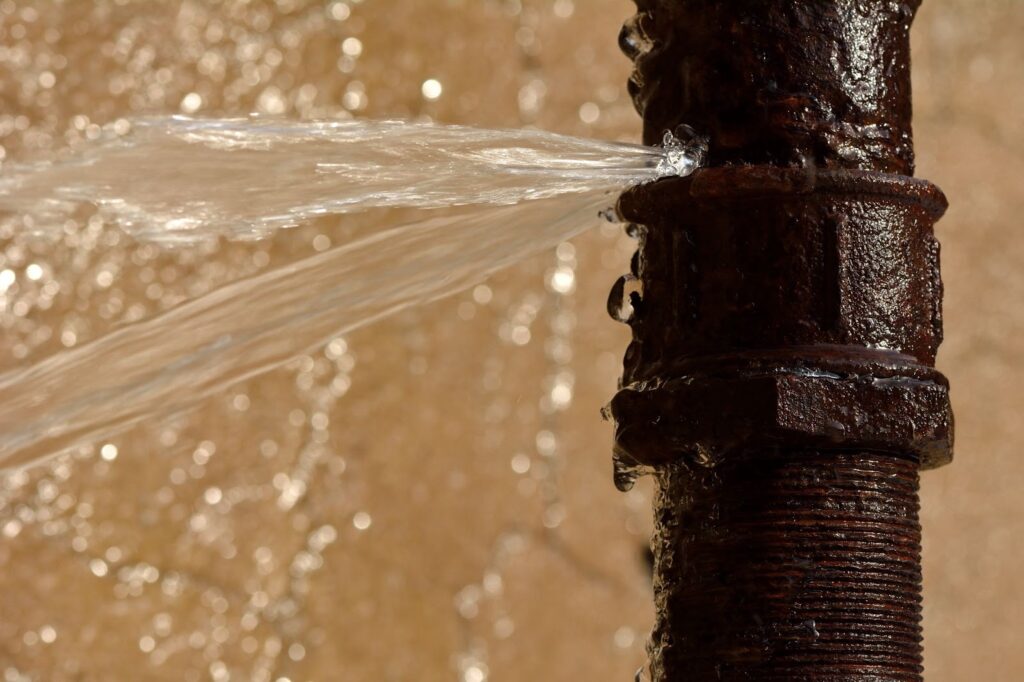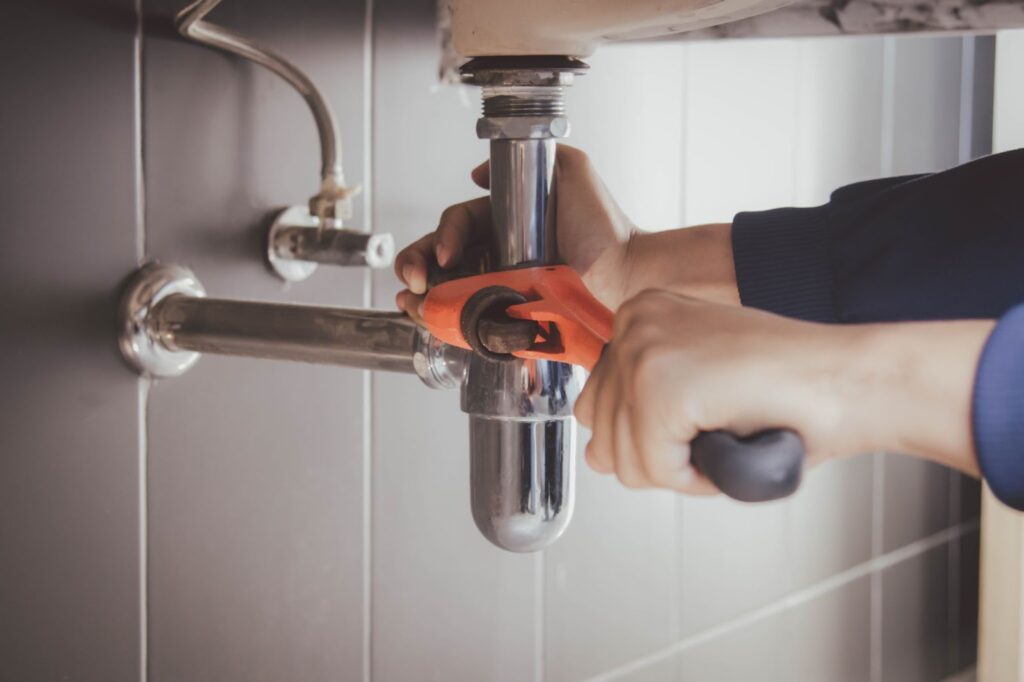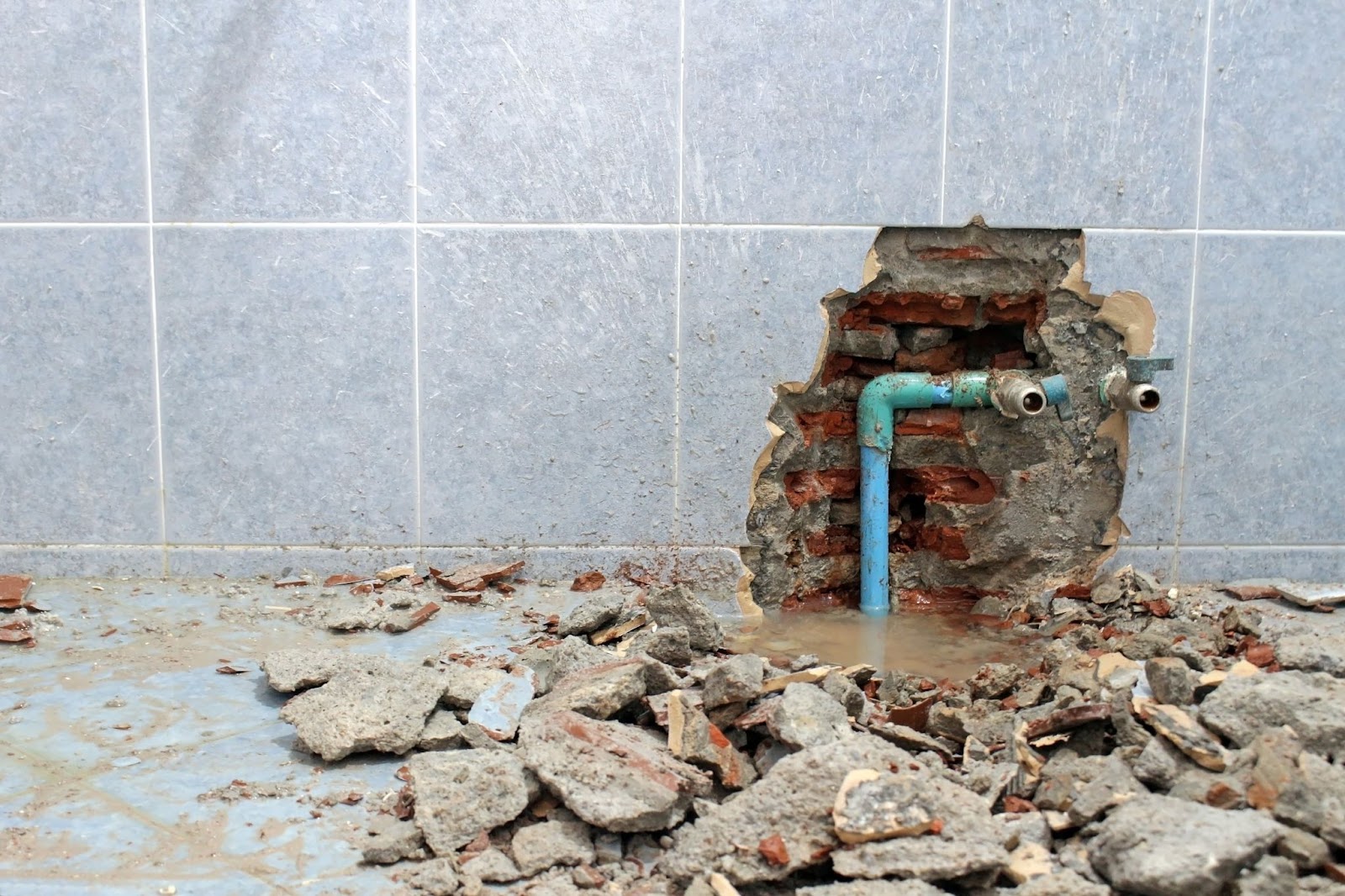Aging pipes pose a silent threat to the structural integrity and safety of homes, deteriorating over time due to corrosion, pressure, and environmental influences. These issues may lead to costly and dangerous problems like water damage, mold growth, and compromised water quality.
Homeowners must understand these challenges to prevent potential disasters. Recognizing the signs of aging pipes early and committing to regular maintenance drastically reduces the risk of emergencies.
We’re here to provide information about managing aging pipes effectively and offer practical advice on monitoring, maintaining, and upgrading your plumbing infrastructure to extend its life and prevent major repairs.
What to know about aging pipes
Understanding aging pipes involves recognizing the susceptibility of materials like galvanized steel and copper to deterioration over time.
Galvanized steel, once protected by a zinc coating, inevitably corrodes, leading to rust accumulation and potential leaks or water contamination. Similarly, copper pipes, despite their durability, can develop pinhole leaks from pitting corrosion caused by the pH levels of water or oxygen presence.
Homeowners should stay vigilant for signs of wear in their plumbing systems to preemptively address issues. Key indicators include discolored water, signaling rust or sediment buildup; decreased water pressure, which may point to blockages or leaks; and visible rust or water stains on pipes in basements or crawl spaces.
An unexplained increase in water bills may also indicate hidden leaks. By monitoring these signs, homeowners can intervene early, preventing minor issues from becoming major and ensuring the longevity and efficiency of their plumbing systems.
Risks associated with old pipes
As pipes age, especially those hidden in foundations or behind walls, the potential for a sudden burst increases. This type of failure causes immediate water damage and necessitates urgent and extensive repairs, disrupting daily life and leading to substantial restoration costs.
Contaminated water supply is another serious concern. Corrosion inside aging pipes causes harmful materials like lead or copper to leach into the water, posing health risks. As pipes degrade, contaminants from surrounding soil may seep into the water system. This problem often remains undetected until it causes health issues or is discovered during routine water quality checks.

Identifying pipe issues
Detecting early signs of pipe deterioration is crucial for preventing severe water damage and avoiding costly repairs. Homeowners should take proactive steps to identify issues early. Here are tips to help you spot potential pipe problems:
- Monitor water pressure and flow: Water pressure or flow changes can indicate leaks or blockages. Regular checks can help catch these issues early.
- Look for discoloration and stains: Water stains on walls, ceilings, or floors often signal hidden leaks. Yellow or brown discoloration usually appears when a leak persists.
- Inspect visible pipes regularly: Routinely check accessible piping for signs of corrosion, rust, or condensation, which can indicate impending leaks or pipe failure.
- Listen for unusual noises: Banging, whistling, or dripping sounds from pipes can suggest various issues, such as ‘water hammer,’ which can stress pipes and lead to damage.
- Check for unpleasant odors: Persistent musty smells often indicate mold damage from hidden leaks. Sewage-like smells may suggest broken vents or sewer pipes needing immediate attention.
Test water quality: Changes in your water’s taste, color, or smell can indicate corrosion or contamination. Installing a water filtration system and regular water testing can provide insights into your pipes’ condition and water quality.
Preventative measures
Implementing routine maintenance for your plumbing is crucial to extend its life and prevent common issues like clogs and corrosion. Here’s how homeowners can safeguard their plumbing:
Schedule regular inspections
Hire a professional plumber for annual inspections to spot potential problems, from hidden leaks to early signs of corrosion, ensuring minor issues don’t escalate.
Soften hard water
Hard water, which contains high levels of calcium and magnesium, accelerates corrosion and buildup in pipes. Installing a water softener prevents these minerals from damaging your pipes and improves water quality.
Use strainers and drain guards
Place strainers in sinks, showers, and tubs to catch hair, food particles, and other debris, significantly preventing clogs and the stress they place on your plumbing system.
Avoid chemical drain cleaners
Chemical drain cleaners can corrode pipes over time. Instead, use a plunger or a plumber’s snake to clear clogs, or a mixture of vinegar and baking soda as a safer, natural alternative.
Insulate pipes
Protect your pipes from extreme temperatures to prevent freezing in winter and condensation in summer. Insulating your pipes reduces the risk of bursts and extends their lifespan.
Flush your water heater annually
Sediment buildup in your water heater can lead to inefficiency and increased pressure on your plumbing system. Flushing the tank annually maintains its efficiency and prevents issues.
Be mindful of what goes down the drain
Educate your household about what shouldn’t go down the drains, such as oils, fats, and unflushable items that can cause blockages and damage.
Modern solutions for aging pipes
Upgrading aging plumbing systems is crucial for ensuring long-term durability and reliability in your home. Modern materials like PEX (cross-linked polyethylene) and PVC (polyvinyl chloride) offer significant advantages over traditional metals like galvanized steel or copper.
PEX is flexible, resists scale and chlorine, and avoids corrosion and pinhole leaks. It is easier to install, often requiring fewer joints, which reduces leak potential. PVC, ideal for drain, waste, and vent lines, resists corrosion and chemical damage, making it durable for sewage applications.
Upgrading offers cost efficiency, as PEX and PVC are generally less expensive than copper and easier to install, reducing labor costs and installation time. These materials also enhance durability, resisting common issues like corrosion and scaling, which prolong lifespan and cut maintenance costs.
Unlike metal pipes, PEX and PVC do not leach into the water supply, maintaining high water quality. PEX is burst-resistant under frozen conditions due to its ability to expand, and PVC provides excellent fire and electrical insulation.
Considering a system upgrade, homeowners should consult with professional plumbers to evaluate their current plumbing system and choose the best materials for replacement based on specific needs and local climate.
Pipe replacement
When facing issues with aging pipes, homeowners must decide between partial and complete pipe replacement. Here’s a breakdown of each option and what you can expect during the replacement process:
Choosing between partial and complete replacement
Partial replacement
This option is suitable when damage is localized to specific areas of your plumbing. It’s a cost-effective solution if most of the system remains in good condition. However, it’s essential to consider that partial replacement might only provide a temporary fix if the rest of the piping is old or corroded.
Complete replacement
Recommended for homes with extensive corrosion or when frequent leaks occur throughout the entire system. Complete replacement can initially be more disruptive and expensive but often proves more economical in the long run by preventing future issues and repairs.
What to expect during the replacement process:
- Initial assessment: A professional plumber will first thoroughly inspect your plumbing system to determine the extent of damage and the best replacement strategy. This assessment includes checking for leaks, corrosion, and overall pipe integrity.
- Choosing materials: Based on the assessment, you’ll choose materials suited to your home’s needs and budget. Modern options like PEX or PVC are popular due to their durability and cost-effectiveness.
- Planning and preparation: Before starting the replacement, the plumber will plan the project’s scope, including where pipes run within your home and how to access these areas with minimal disruption. Preparation might also involve obtaining necessary permits from local authorities.
- Replacement process: During the replacement, expect some disruption to your daily routine. Water will need to be turned off for a period, and areas of your home may need to be accessed to remove old pipes and install new ones. Professional plumbers will work to minimize disruption and ensure a quick, efficient process.
- Testing and finalization: After installation, your new plumbing system will be tested to ensure everything is working correctly without leaks. The plumber will also make necessary adjustments during this phase to ensure optimal operation.
Understanding these aspects helps prepare for what can be a significant but worthwhile home improvement project. Replacing old pipes resolves immediate plumbing issues and prevents potential disasters, ensuring your home remains safe and functional for years to come.
Insurance and aging infrastructure
Navigating home insurance for aging pipes is crucial for effectively managing potential risks and financial liabilities. Here’s how to understand coverage and handle claims:
Understand your insurance coverage for pipe damage
Review your policy to know what types of pipe damage it covers and under what circumstances, as most policies cover sudden and accidental damage but not wear and tear or negligence.
Be aware of exclusions, such as damage from unresolved maintenance issues, which are often not covered, and limitations on coverage for older plumbing systems unless they have been recently inspected or upgraded.
How to handle claims and the financial aspects of repairs
- Document damage thoroughly with photos and detailed notes right after it occurs to support your insurance claim and expedite the claims process.
- Notify your insurer immediately to start the claims process, providing all necessary documentation and following their steps for repair.
- Choose a reputable, licensed contractor for repairs, whether an insurer-approved contractor or one of your choosing, to ensure quality work and smooth claim processing.
- Understand your policy’s deductible and coverage limits. Be prepared to cover some repair costs out of pocket if the damage exceeds your policy limits or requires upgrades to comply with current codes.
Understanding your home insurance and managing the claims process effectively empowers you to mitigate the risks associated with aging pipes. This knowledge helps ensure financial preparedness for potential pipe-related issues.

If your pipes burst, call Utah Disaster Clean Up
Dealing with aging pipes and the potential damages they cause can be daunting. When it comes to implementing solutions, such as pipe replacement or emergency repairs, partnering with a reliable service is crucial. Utah Disaster Clean Up offers expert assistance in managing the complexities of plumbing issues in older homes.
Our experienced team provides thorough assessments, modern solutions, and swift repairs to ensure your home’s plumbing system is restored efficiently and effectively. Trust Utah Disaster Clean Up to safeguard your home against the challenges of aging infrastructure, giving you peace of mind and maintaining the safety and functionality of your living space.
Contact Utah Disaster Clean Up or call 435-512-1584 anytime, 24/7.



